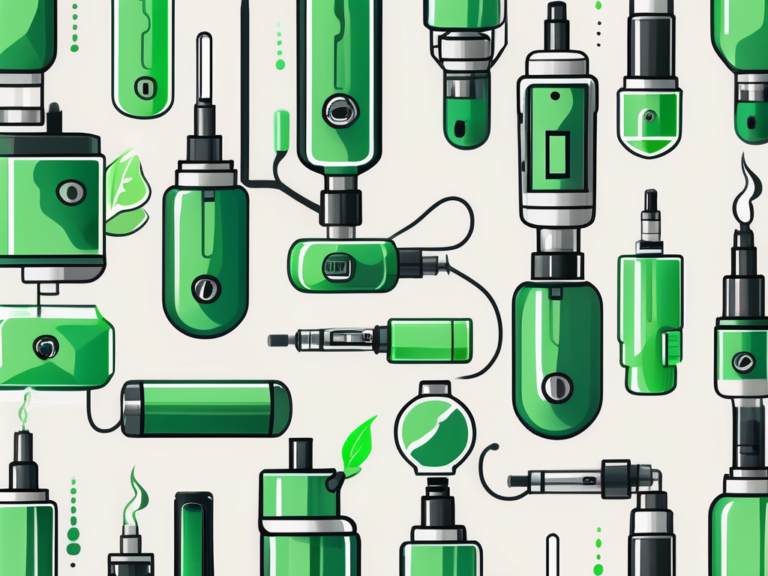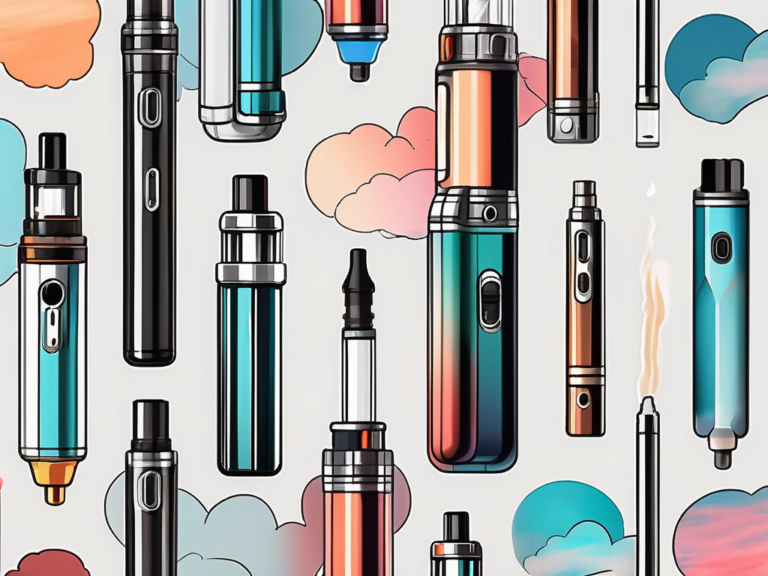why do vapes make me cough more than smoking
In recent years, vaping has become increasingly popular as an alternative to smoking. However, many vapers have found themselves perplexed by a common issue – why do vapes make them cough more than smoking? This article aims to shed light on this phenomenon and provide insights into the science behind it.
Understanding the Basics of Vaping
Vaping involves the inhalation of vapor produced by an electronic device known as a vape. This vapor is created by heating a liquid known as vape juice, which typically consists of a combination of propylene glycol, vegetable glycerin, flavorings, and nicotine (although nicotine-free options are also available).
For individuals new to vaping, understanding the components and functioning of vape devices is crucial. Vape devices come in various shapes and sizes, ranging from sleek pens to larger box mods. These devices are powered by batteries that provide the energy necessary to heat the coil and vaporize the e-liquid. Some advanced vape devices even allow users to adjust the temperature and wattage to customize their vaping experience.
The Functioning of Vape Devices
The Composition of Vape Juice
Let’s begin by examining the composition of vape juice. One of the primary components is propylene glycol (PG), which acts as a carrier for the flavors and nicotine. PG is known for its hygroscopic properties, meaning it attracts water molecules from the surrounding environment. This can result in a drying effect on the throat and airways.
Another key ingredient in vape juice is vegetable glycerin (VG), which is responsible for producing the thick vapor that many vapers enjoy. VG is a natural substance derived from vegetable oils and is known for its sweet taste. When heated, VG creates dense clouds of vapor, adding to the overall vaping experience.
The Functioning of Vape Devices
Vape devices utilize a heating element known as a coil to vaporize the e-liquid. When this coil reaches a certain temperature, it turns the liquid into vapor, which is then inhaled. The temperature at which the coil operates, along with the type and concentration of the ingredients in the vape juice, can affect throat irritation and coughing.
It’s important for vapers to understand the relationship between the coil resistance, wattage, and airflow in their devices, as these factors can impact the flavor and intensity of the vapor produced. By experimenting with different settings and vape juice formulations, individuals can tailor their vaping experience to suit their preferences.
The Science Behind Coughing While Vaping
Now that we’ve covered the basics, let’s delve into the factors that contribute to coughing while vaping.
When it comes to vaping, understanding the science behind why some individuals experience coughing can shed light on how to mitigate this common issue. Beyond the basic mechanics of inhaling vapor, several key factors play a role in triggering coughing fits among vapers.
The Role of Propylene Glycol
As mentioned earlier, propylene glycol is a common ingredient in vape juice. While generally recognized as safe for consumption, it can cause throat irritation in some individuals. This irritation may manifest as coughing, especially for those who are sensitive to its effects.
Propylene glycol, a synthetic liquid substance, is used to distribute flavor and nicotine in vape juice. While it is considered safe for ingestion by regulatory bodies like the FDA, its inhalation effects can vary from person to person. For vapers prone to throat sensitivity, propylene glycol can trigger a reflexive cough as the body attempts to expel the irritant.
The Impact of Vape Temperature
Another factor that can contribute to coughing while vaping is the temperature at which the coil operates. Higher temperatures can lead to a harsher and more irritating vapor, increasing the likelihood of coughing. It’s worth noting that certain vape devices allow users to adjust the temperature to find their preferred balance of flavor and throat hit.
Temperature control vaping devices offer users the ability to fine-tune their experience by adjusting the heat output of the coil. By finding the optimal temperature for vaporization, vapers can potentially reduce the harshness of the vapor and lessen the likelihood of coughing episodes. Experimenting with different temperature settings can help individuals customize their vaping experience to suit their preferences and minimize throat irritation.
Comparing Vaping and Smoking
To understand why vaping might cause more coughing than smoking, it’s important to compare the two.
When delving deeper into the comparison between vaping and smoking, it’s crucial to consider not only the chemical differences but also the environmental impact. Vaping devices, such as e-cigarettes, produce vapor through the heating of e-liquid, which typically contains nicotine, flavorings, and other additives. On the other hand, traditional cigarettes involve the combustion of tobacco, releasing a complex mixture of chemicals, including tar and carbon monoxide, into the air. This distinction in the substances emitted into the environment can have varying effects on both the user and those around them.
The Chemical Differences
While smoking involves the combustion of tobacco, vaping avoids this process entirely. Instead, the e-liquid is heated, producing an aerosol. This difference in chemical composition could be a contributing factor to increased coughing among vapers compared to smokers.
Furthermore, the long-term health implications of these chemical variances are still being studied extensively. The potential risks associated with inhaling vapor from e-cigarettes versus the smoke from traditional cigarettes remain a topic of ongoing research and debate within the scientific community.
The Physical Reactions to Vaping vs Smoking
Additionally, the act of inhaling and exhaling vapor differs from smoking traditional cigarettes. The sensation of inhaling a denser and potentially dryer vapor might trigger coughing, particularly for individuals who are accustomed to the act of smoking.
Moreover, the social dynamics surrounding vaping and smoking also play a significant role in how these habits are perceived and adopted. Vaping, with its wide range of flavors and sleek devices, has gained popularity among younger demographics, while smoking has seen a decline in certain populations due to increased awareness of its health risks. Understanding these societal influences can provide valuable insights into the preferences and behaviors of individuals when choosing between vaping and smoking.
Health Implications of Vaping and Coughing
While coughing during vaping may be bothersome, it’s essential to consider the broader health implications. Understanding the relationship between vaping and coughing can shed light on potential risks associated with this popular activity.
Vaping involves inhaling and exhaling vapor produced by an electronic cigarette or similar device. The act of vaping can irritate the throat and airways, leading to coughing in some individuals. This coughing reflex is the body’s way of trying to clear the airways of any irritants or foreign particles introduced during vaping.
Short-Term Effects of Vaping
In the short term, coughing while vaping may be a temporary inconvenience. Some individuals experience an adjustment period as their body adapts to the vapor. It’s important to note that the ingredients in vape juice, such as propylene glycol and vegetable glycerin, can also contribute to throat irritation and coughing in some users.
If persistent coughing or other respiratory symptoms occur, it’s advisable to consult a healthcare professional. They can provide guidance on managing symptoms and offer insights into potential underlying issues that may be exacerbated by vaping.
Long-Term Consequences of Vaping
While research into the long-term effects of vaping is still ongoing, studies suggest that regular vaping may have potential health risks. These risks include respiratory conditions and inflammation. Chronic exposure to the chemicals in vape juice and the byproducts of heating them can lead to lung damage over time.
It’s crucial to be mindful of one’s vaping habits and use moderation. Choosing high-quality vape products from reputable sources, staying hydrated, and taking regular breaks from vaping can help reduce the likelihood of experiencing persistent coughing or other adverse health effects. Additionally, staying informed about the latest research on vaping and its impact on health can empower individuals to make well-informed decisions about their vaping habits.
Tips to Reduce Coughing While Vaping
If coughing while vaping becomes bothersome, there are several measures that can be taken to mitigate its occurrence.
One additional strategy to consider is staying hydrated. Vaping can sometimes lead to dehydration, which can exacerbate throat irritation and coughing. Ensuring adequate fluid intake can help alleviate these symptoms and promote a more comfortable vaping experience.
Adjusting Vape Settings
Many vape devices offer adjustable settings such as temperature or airflow. Experimenting with these settings can help find a configuration that minimizes throat irritation and subsequent coughing.
Moreover, cleaning your vape device regularly can also contribute to reducing coughing. Residue buildup from prolonged use can impact the quality of the vapor produced, potentially leading to throat irritation. By maintaining a clean device, vapers can ensure a smoother vaping experience.
Choosing the Right Vape Juice
Vape juices come in various flavors and nicotine strengths. Some individuals may find that certain flavors or nicotine concentrations trigger coughing. Exploring different options and finding the right balance can make a significant difference in reducing coughing episodes.
It’s worth noting that proper inhalation technique plays a crucial role in minimizing coughing while vaping. Taking slow and steady draws, allowing the vapor to fully enter the lungs before exhaling, can help prevent throat irritation and coughing fits. Practicing mindful inhalation techniques can enhance the overall enjoyment of vaping.
Overall, while coughing while vaping may be a common experience for some vapers, it is important to understand the reasons behind it and take appropriate measures to minimize discomfort. By grasping the various factors that contribute to coughing while vaping, individuals can better tailor their vaping experience to their preferences and potentially reduce any adverse effects.






